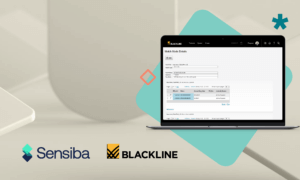For busy accounting teams, automating bank reconciliations offers one of the fastest ways to increase efficiency, improve financial risk management, and free up time for higher-value data analysis.
Using BlackLine’s Transaction Matching to reconcile bank accounts to the general ledger allows finance teams to spend less time squinting at multi-colored spreadsheets and more time identifying high-risk transactions and analyzing the organization’s financial performance.
Automated bank and general ledger matching provide several benefits to finance teams and organizations, including:
- A reduction in errors associated with manual data entry.
- Lowering the time and effort required for reconciliations.
- Providing a comprehensive audit trail and supporting evidence.
How BlackLine Automates Bank Reconciliations
Using BlackLine’s tools, bank transactions occurring during a set period (such as a month) are downloaded into the system and reviewed by the platform’s matching engine. From there they are sorted into three categories: Matched, Suggested Matches, and Unmatched.
Matched Transactions
Transactions for which key details (such as the check number and amount) match general ledger data precisely are sorted into the “matched transactions” category. In most instances, this will include 80% to 90% of an account’s transactions in a given period.
Suggested Matches
Transactions for which most, but not all, of the key details are identical are routed into a “suggested matches” category for review by the finance team. This will typically include transactions with potential issues such as missing check numbers, or a transaction that falls outside the expected date range for clearing the bank.
In these instances, the finance team can provide any missing data and approve the reconciliation of a flagged transaction or set it aside for further review.
Unmatched Transactions
The final category, “unmatched transactions,” would require manual examination and intervention by the finance team. In most instances, this should only be a small handful of exceptions that can be identified and processed rather easily.
Improving Automated Matching
As finance professionals review suggested matches and unmatched transactions, they can adjust BlackLine’s rules to account for a broader range of acceptable variations. If, for instance, several transactions are cleared beyond the default date range, the finance team can adjust the range to include a higher volume of transactions that still fall within the organization’s acceptable tolerances.
Over time, these adjustments to the system’s matching rules can help the finance team enhance the benefits of their transaction matching tool while streamlining reconciliations and the financial close.
Well-directed automation can free up valuable time for the finance team, allowing them to focus their time and attention on processes that provide higher value to the organization and allow them to partner more effectively with business unit leaders.
To begin taking advantage of BlackLine’s powerful transaction matching tools, contact us today.















